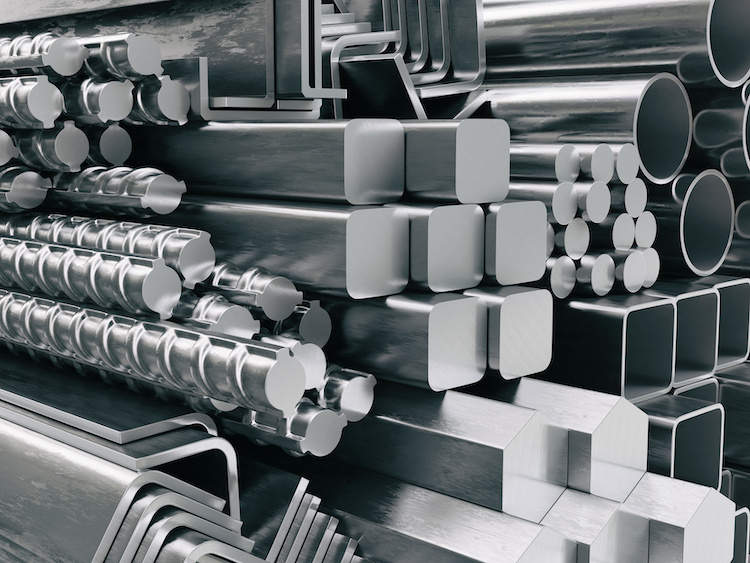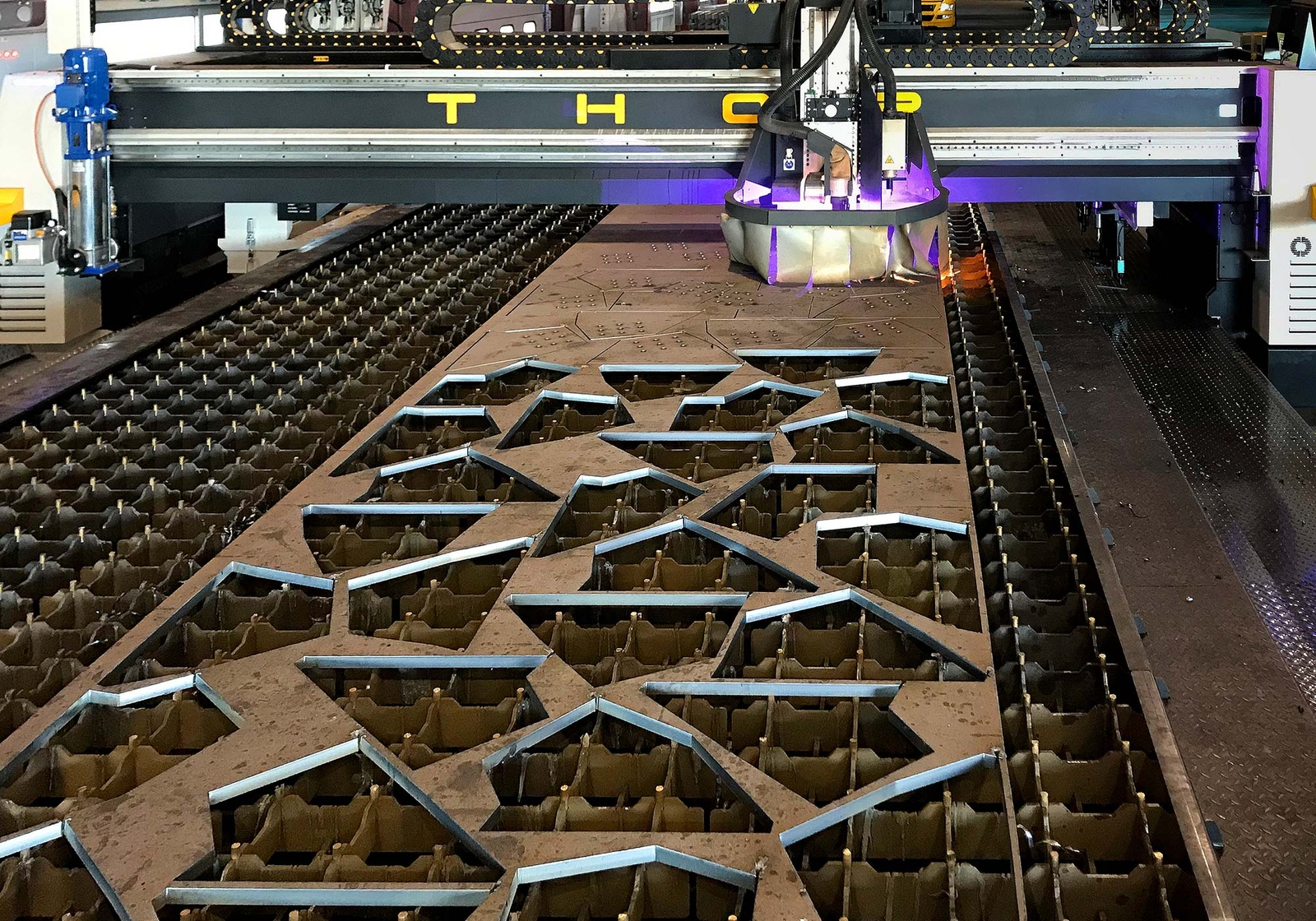Cutting-Edge Metal Fabrication Melbourne: Customized Solutions for each Project
Cutting-Edge Metal Fabrication Melbourne: Customized Solutions for each Project
Blog Article
The Ultimate Manual on Custom Steel Manufacture Solutions for Structural Projects
In the realm of architectural jobs, the significance of custom-made steel fabrication services can not be overemphasized. From the foundational understanding of steel construction basics to the complex process of choosing one of the most appropriate products, every action in this journey plays a crucial role in the utmost success of a project. As we navigate with the intricacies of design factors to consider, fabrication procedures, and quality control steps, a thorough handbook acts as an assisting light for specialists seeking excellence in steel construction solutions. Remain tuned to reveal the understandings that can revolutionize the way structural jobs are come close to and implemented.
Comprehending Customized Steel Construction Fundamentals
Exploring the fundamentals of customized steel fabrication offers insight into the elaborate procedure of changing raw steel right into customized structural components. Custom steel fabrication is a specific production method that involves cutting, shaping, and putting together steel materials to develop one-of-a-kind frameworks according to particular project needs. Recognizing the fundamentals of customized steel construction is essential for guaranteeing the successful implementation of architectural projects.
The procedure commonly begins with the assessment of task specs and design needs. This preliminary phase entails in-depth planning and collaboration in between developers, fabricators, and designers to establish the most ideal technique for fabricating the steel elements. Precision is crucial during the construction procedure, as even small variances can impact the architectural integrity of the end product.
Different strategies, such as cutting, welding, and shaping, are utilized to transform raw steel into the wanted structural components. Competent fabricators use advanced machinery and devices to ensure precision and uniformity throughout the fabrication process. Quality assurance steps are implemented to validate the stability of the made parts before they are assembled on-site, guaranteeing compliance with sector requirements and job requirements.
Picking the Right Steel Materials

First and foremost, the kind of architectural job and its particular requirements play an important role in figuring out one of the most suitable steel products. Aspects such as the load-bearing capability, environmental problems, and preferred life expectancy of the structure will certainly dictate the quality and kind of steel that ought to be made use of.
Additionally, the physical buildings of the steel, consisting of strength, weldability, and ductility, should align with the task's requirements to assure ideal performance and durability (steel fabrication melbourne). Additionally, factors to consider such as corrosion resistance, cost-effectiveness, and schedule of the steel materials need to likewise be taken into consideration throughout the selection procedure
Design Considerations for Architectural Jobs
Architectural projects demand meticulous interest to design considerations to ensure both performance and safety and security are prioritized throughout the click here for info building and construction process. When it pertains to designing structural tasks, several essential variables should be taken right into account to guarantee the success of the venture. Firstly, the structural stability of the structure have to be a top priority. This includes assessing lots, stresses, and ecological variables to determine the most suitable style that can stand up to numerous problems gradually. In addition, factors to consider for the capability of the framework play an essential function in the design procedure. Comprehending the function of the structure and exactly how it will be made use of helps in creating a style that maximizes efficiency and functionality. Incorporating elements that enhance the looks of the framework can better boost the overall layout. Stabilizing appearance, performance, and safety is essential in developing successful architectural jobs that meet both practical and aesthetic demands. By carefully taking into consideration these elements throughout the style stage, engineers and engineers can ensure the structural job's success from conception to conclusion.
Enhancing Fabrication Procedures for Performance

In addition, executing lean production principles can substantially boost efficiency in steel construction. By decreasing waste, optimizing process, and boosting communication between different groups associated with the fabrication process, tasks can be completed extra swiftly and with better requirements.
In addition, developing an efficient manufacturing timetable and workflow can aid in prioritizing tasks, designating resources successfully, and meeting task deadlines immediately. By having a clear strategy in area and routinely keeping an eye on progression, any potential bottlenecks or delays can be identified and dealt with immediately, making sure smooth and reliable manufacture procedures for architectural tasks.
Quality Assurance and Task Monitoring in Steel Manufacture
To make certain the effective implementation of steel manufacture tasks, careful high quality control procedures and efficient job management practices are essential components in keeping accuracy and meeting client assumptions. Quality assurance in steel manufacture includes extensive evaluations at various phases of the construction process to verify conformity with job specifications and sector criteria. This includes material screening, dimensional checks, and weld assessments to make sure architectural integrity and safety.
Task administration plays a vital role in working with the different aspects of steel manufacture jobs, such as scheduling, source allotment, and interaction amongst team participants. A well-defined task plan with clear purposes, turning points, and timelines helps to keep an eye on progress and resolve any type of possible problems proactively. Reliable communication in between all stakeholders, including customers, producers, designers, and professionals, is crucial for ensuring that the job proceeds efficiently and meets the preferred top quality standards.
Final Thought
In verdict, custom steel construction plays a critical role in structural jobs by offering customized remedies using the best materials and style factors to consider. Performance in fabrication processes, quality assurance, and efficient job monitoring are essential for successful outcomes. By comprehending the essentials of custom steel fabrication and executing streamlined processes, job teams can provide high-grade and sturdy structures that meet the particular needs of their clients.
Custom steel fabrication is a specific manufacturing technique that includes cutting, shaping, and assembling steel materials to develop unique frameworks according to details job demands.To guarantee the successful execution of steel manufacture tasks, meticulous quality control you could try these out measures and reliable job administration practices are important components in keeping precision and meeting customer assumptions. Quality control in steel fabrication involves strenuous assessments at different stages of the fabrication procedure to verify compliance with task requirements and market standards (steel fixing).Job management plays a critical function in coordinating the numerous aspects of steel manufacture jobs, such as organizing, source allowance, and communication amongst team participants.In conclusion, personalized steel fabrication plays a critical function in architectural jobs by giving tailored remedies using the appropriate materials and design factors to consider
Report this page